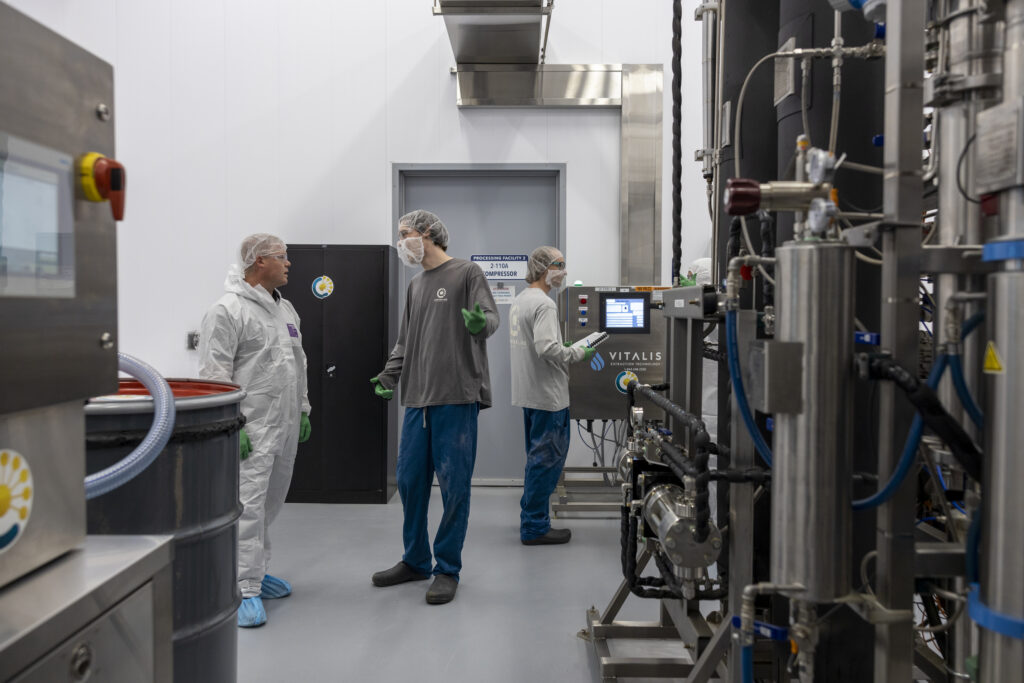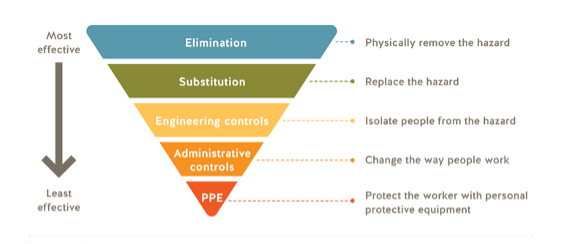
Features
Human Resources
Regulations
Building a safer cannabis industry: The importance of risk management
July 20, 2023 By Alexandra Skinner, WorkSafeBC
 Photo: WorkSafeBC
Photo: WorkSafeBC Workplace safety should always be a top priority, and the cannabis industry is no exception.
While many cannabis producers have made strides in creating safer workplaces, it’s important to understand that effective occupational health and safety (OSH) programs start with a fulsome understanding of risk management.
Managing risk in your workplace involves thinking about what might cause harm to workers and determining whether you are taking reasonable steps to prevent that harm from happening.
Employers, workers, and supervisors all have a role to play in creating a workplace culture that prioritizes health and safety and prevents injury, disease, and death. In fact, an effective OHS program involves workers in identifying hazards, evaluating risks, and implementing appropriate controls.
In this article you’ll learn the steps to creating an effective OHS program based on the unique risks faced by workers in the cannabis industry.
Step 1: Identify the hazards
The first step in managing risk is to identify hazards – which means anything that can cause harm to workers.
The top hazards in the cannabis industry are compressed carbon dioxide, cryogens or refrigerants, and flammable liquid solvents that are used in extraction. Particulates from Cannabis plants can cause respiratory disease and sensitization in workers, and pressurized systems may also present a hazard.
Musculoskeletal injuries (MSIs) in workers are also a risk in the cannabis industry. Workers use their fingers to do careful movements, like trimming or twisting, which can cause stress injuries over time. They can also get hurt if they are not correctly positioned while they trim, harvest, or handle the products.
Step 2: Assess the risks
Once hazards have been identified, the next step is to assess the related risks and prioritize ways to control the risks. When assessing risks, you must consider all parts of the system and how the various components may interact. It’s not just physical things, but also the actions that people take, how they move or navigate through the workplace, how they work, how they stand, and how they sit.
Step 3: Control or eliminate the risks
The next step involves controlling or preferably eliminating the risks that were identified.
Start by controlling the hazards that have the highest risks. An effective way to do this is by using the hierarchy of controls.

Photo: WorkSafeBC
If you can’t physically remove a hazard or replace it with something safer, the next best thing is to use engineering controls. These can include things like guarding on equipment, air monitoring, and ventilation systems.
Administrative controls, like developing safe-work procedures, keeping the workplace clean, and providing education and training to workers, can also help control risks. If these controls are not enough, personal protective equipment like gloves or eye protection can be used. Often, a combination of controls will be needed to control the risks effectively.
Step 4: Document procedures and share with your workers
Controls are only effective if workers understand what they are and can put them into practice.
After identifying and controlling the risks, you should document safety procedures and share this with your workers. You should also provide ongoing training to all workers about safety processes and procedures – and when onboarding new workers. Engage workers regularly in discussions relating to these procedures to gain valuable insights.
Step 5: Test and monitor
Once controls have been put in place, monitor and test them to be sure they are working as intended. And check in with your workers on the effectiveness of the program.
Finally, if you need help, WorkSafeBC has specialists trained to help cannabis producers and extractors. You can also contact WorkSafeBC for guidance before starting operations.
More information
As a reminder, to reduce the potential for injury or disease, it’s important to manage the risks and hazards in your workplace.
For more information on maintaining a safe workplace in cannabis cultivation and/or processing visit our website.
Print this page